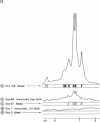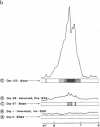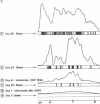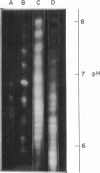Abstract
Anti-hapten sera prepared in rabbits contain individual immunoglobulin species capable of binding several pairs of structurally diverse haptens A and B. (A = inosine, uridine, menadione, vitamin K1, ribonuclease; B = 2,4-dinitrophenyl). In antisera against hapten A subjected to isoelectric focusing, there are many anti-A immunoglobulin species, but only a small proportion of these bind both A and B. When rabbits are primed with haptens A coupled to a carrier and then challenged with hapten B-carrier complex, there is an early restricted response of those species that bind both A and B. Later, immunoglobulins appear which bind B, but not A. These results suggest that multiple-binding antibodies exist in antisera against hapten and that such multiple binding is functional; i.e., that when two diverse haptens A and B bind to an immunoglobulin, both haptens may stimulate the cell-surface receptor to induce production of this immunoglobulin. Such phenomena may also provide a molecular basis for maturation of the immune response.
Keywords: antibody heterogeneity, isoelectric focusing, combining region, cell-surface receptors
Full text
PDF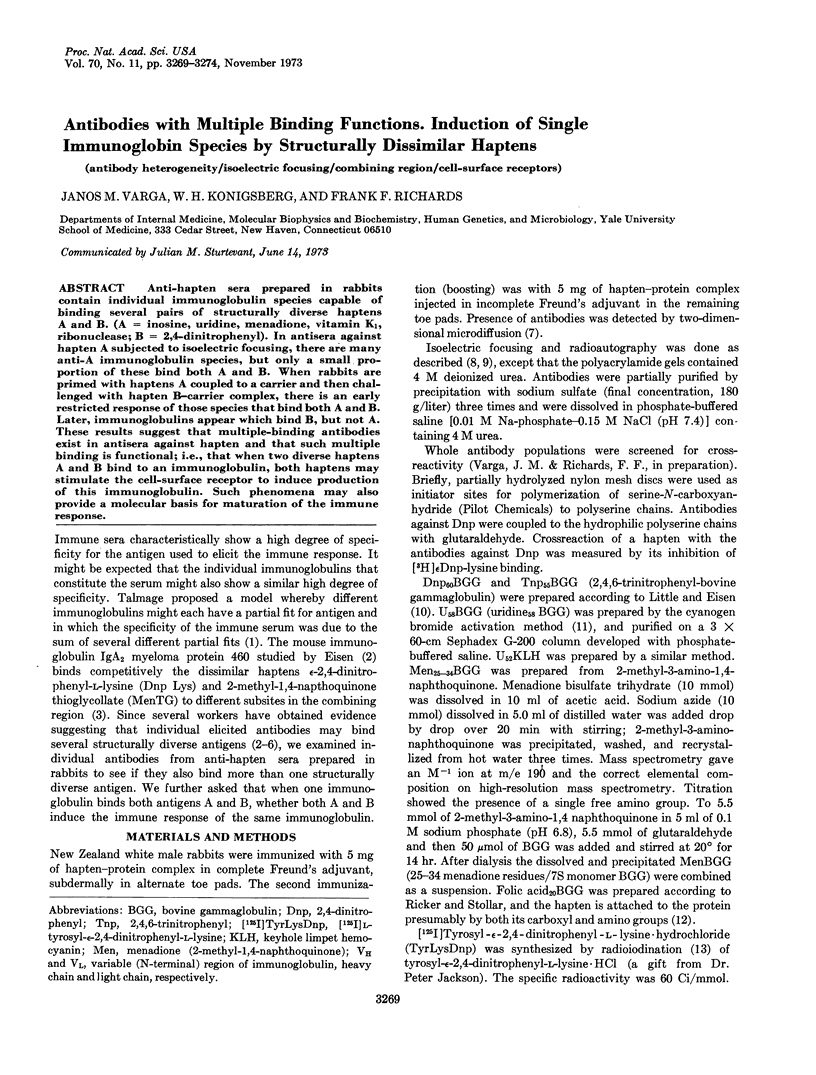
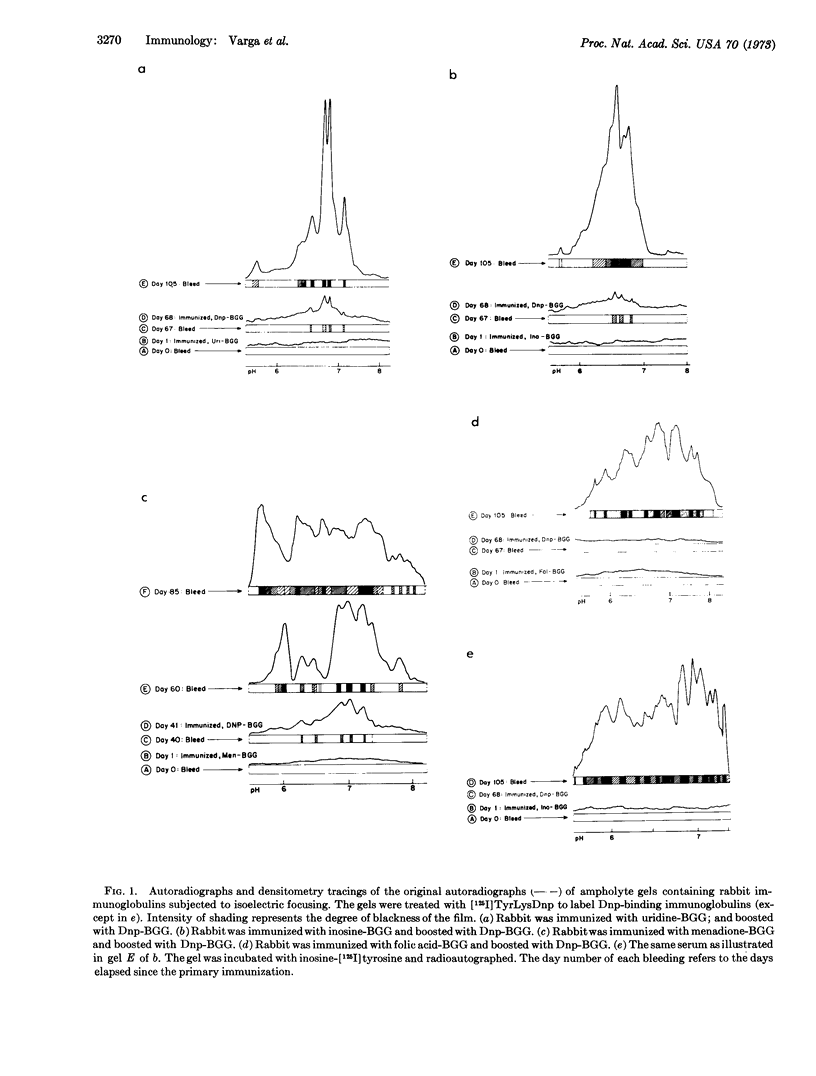
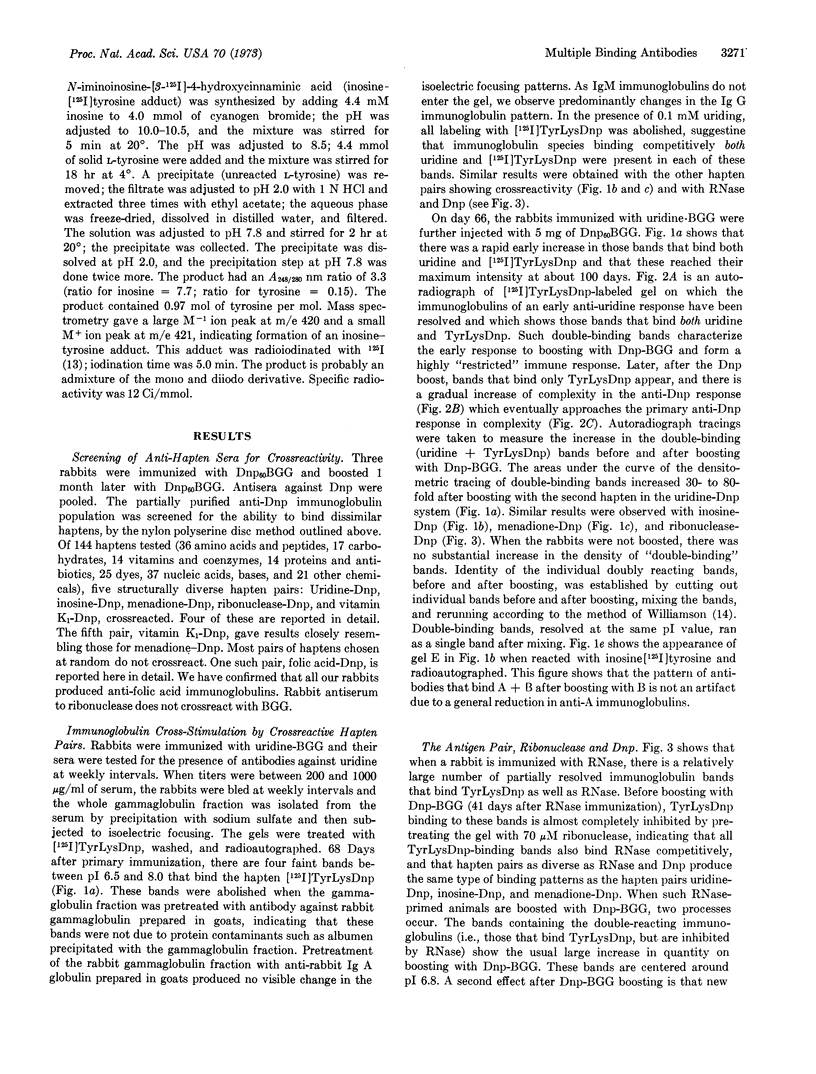
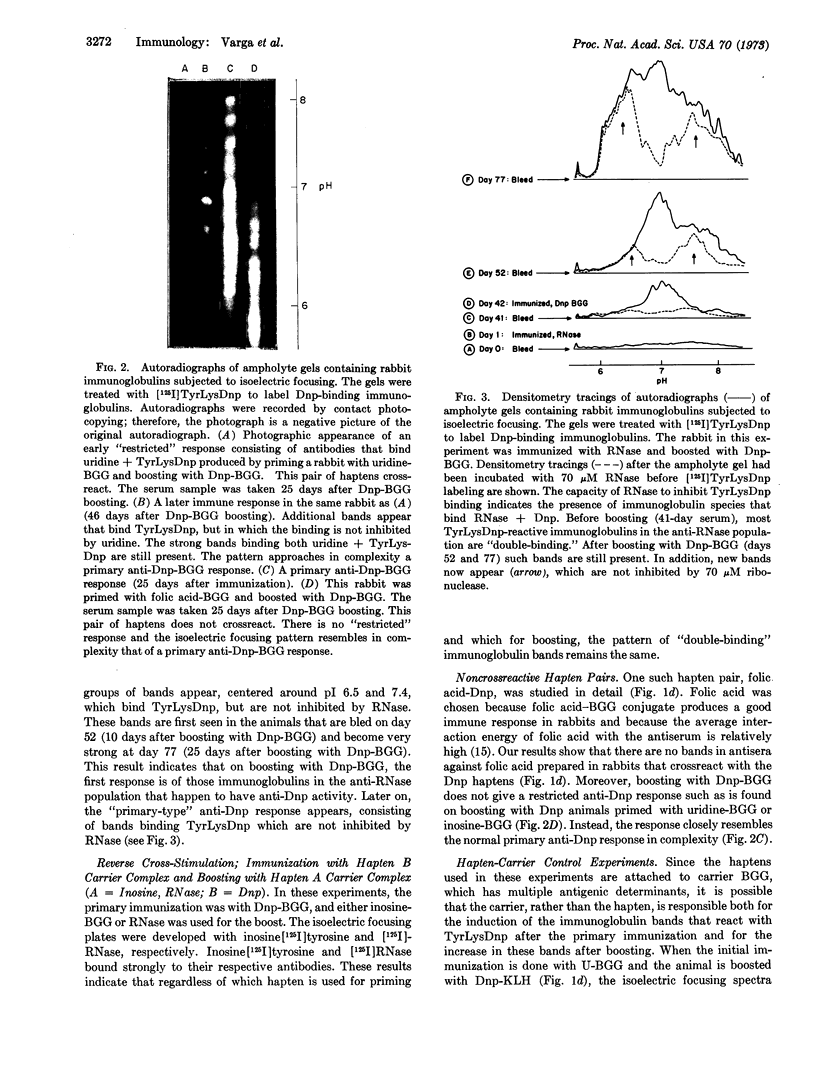
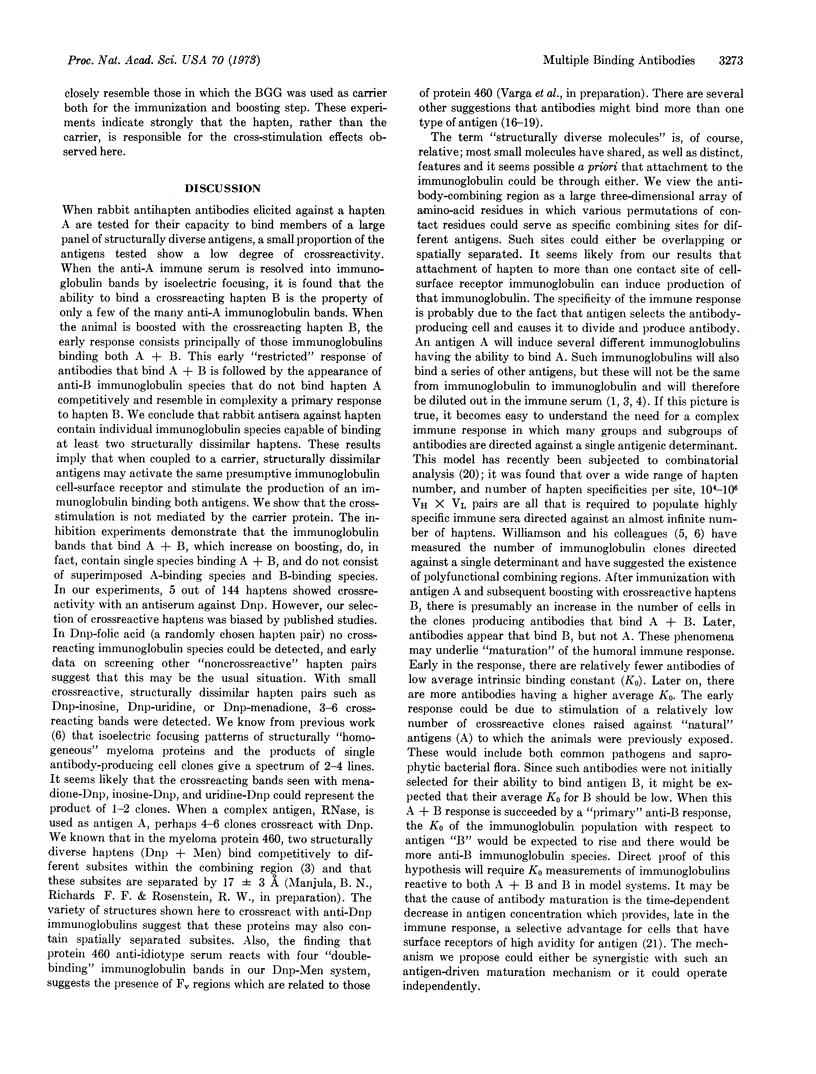
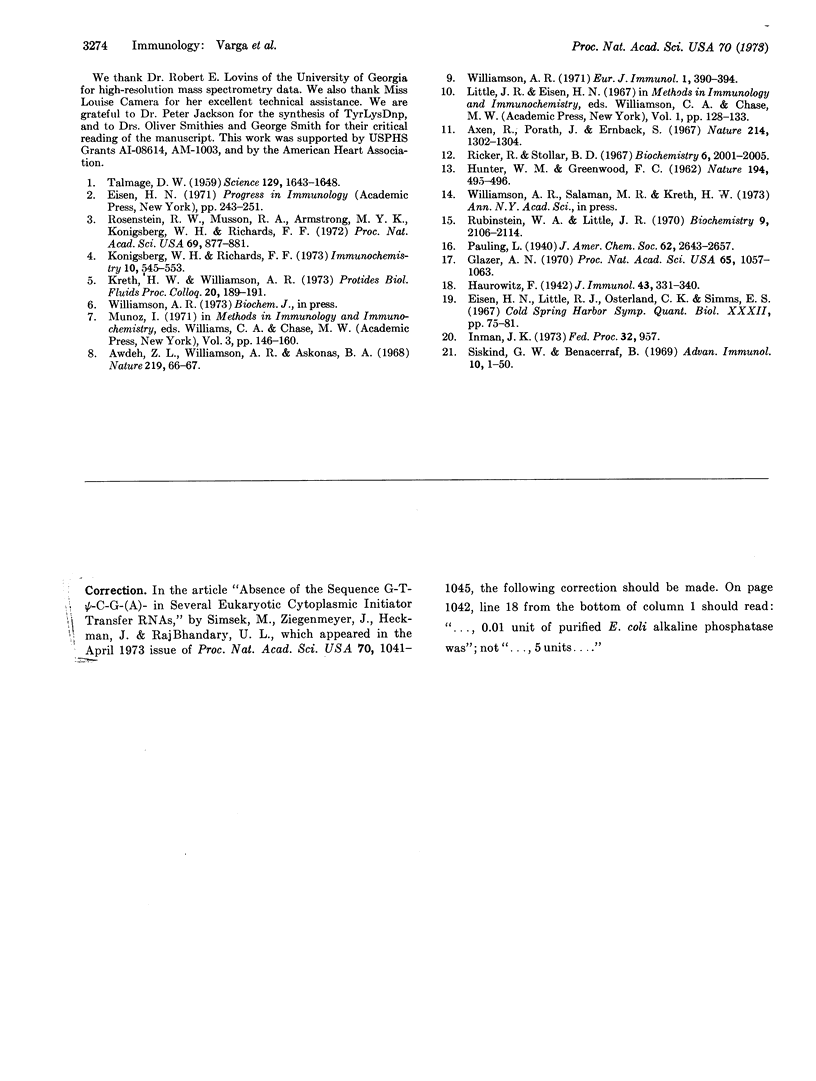
Images in this article
Selected References
These references are in PubMed. This may not be the complete list of references from this article.
- Awdeh Z. L., Williamson A. R., Askonas B. A. Isoelectric focusing in polyacrylamide gel and its application to immunoglobulins. Nature. 1968 Jul 6;219(5149):66–67. doi: 10.1038/219066a0. [DOI] [PubMed] [Google Scholar]
- Axén R., Porath J., Ernback S. Chemical coupling of peptides and proteins to polysaccharides by means of cyanogen halides. Nature. 1967 Jun 24;214(5095):1302–1304. doi: 10.1038/2141302a0. [DOI] [PubMed] [Google Scholar]
- Glazer A. N. On the prevalence of "nonspecific" binding at the specific binding sites of globular proteins. Proc Natl Acad Sci U S A. 1970 Apr;65(4):1057–1063. doi: 10.1073/pnas.65.4.1057. [DOI] [PMC free article] [PubMed] [Google Scholar]
- HUNTER W. M., GREENWOOD F. C. Preparation of iodine-131 labelled human growth hormone of high specific activity. Nature. 1962 May 5;194:495–496. doi: 10.1038/194495a0. [DOI] [PubMed] [Google Scholar]
- Richards F. F., Konigsberg W. H. Speculations. How specific are antibodies? Immunochemistry. 1973 Aug;10(8):545–553. doi: 10.1016/0019-2791(73)90227-9. [DOI] [PubMed] [Google Scholar]
- Ricker R., Stollar B. D. Antibodies reactive with specific folic acid determinants. Biochemistry. 1967 Jul;6(7):2001–2005. doi: 10.1021/bi00859a018. [DOI] [PubMed] [Google Scholar]
- Rosenstein R. W., Musson R. A., Armstrong M. K., Konigsberg W. H., Richards F. F. Contact regions for dinitrophenyl and menadione haptens in an immunoglobulin binding more than one antigen. Proc Natl Acad Sci U S A. 1972 Apr;69(4):877–881. doi: 10.1073/pnas.69.4.877. [DOI] [PMC free article] [PubMed] [Google Scholar]
- Rubenstein W. A., Little J. R. Properties of the active sites of antibodies specific for folic acid. Biochemistry. 1970 May 12;9(10):2106–2114. doi: 10.1021/bi00812a012. [DOI] [PubMed] [Google Scholar]
- Siskind G. W., Benacerraf B. Cell selection by antigen in the immune response. Adv Immunol. 1969;10:1–50. doi: 10.1016/s0065-2776(08)60414-9. [DOI] [PubMed] [Google Scholar]
- TALMAGE D. W. Immunological specificity, unique combinations of selected natural globulins provide an alternative to the classical concept. Science. 1959 Jun 19;129(3364):1643–1648. doi: 10.1126/science.129.3364.1643. [DOI] [PubMed] [Google Scholar]
- Williamson A. R. Antibody isoelectric spectra. Analysis of the heterogeneity of antibody molecules in serum by isoelectric focusing in gel and specific detection with hapten. Eur J Immunol. 1971 Nov;1(5):390–394. doi: 10.1002/eji.1830010517. [DOI] [PubMed] [Google Scholar]



